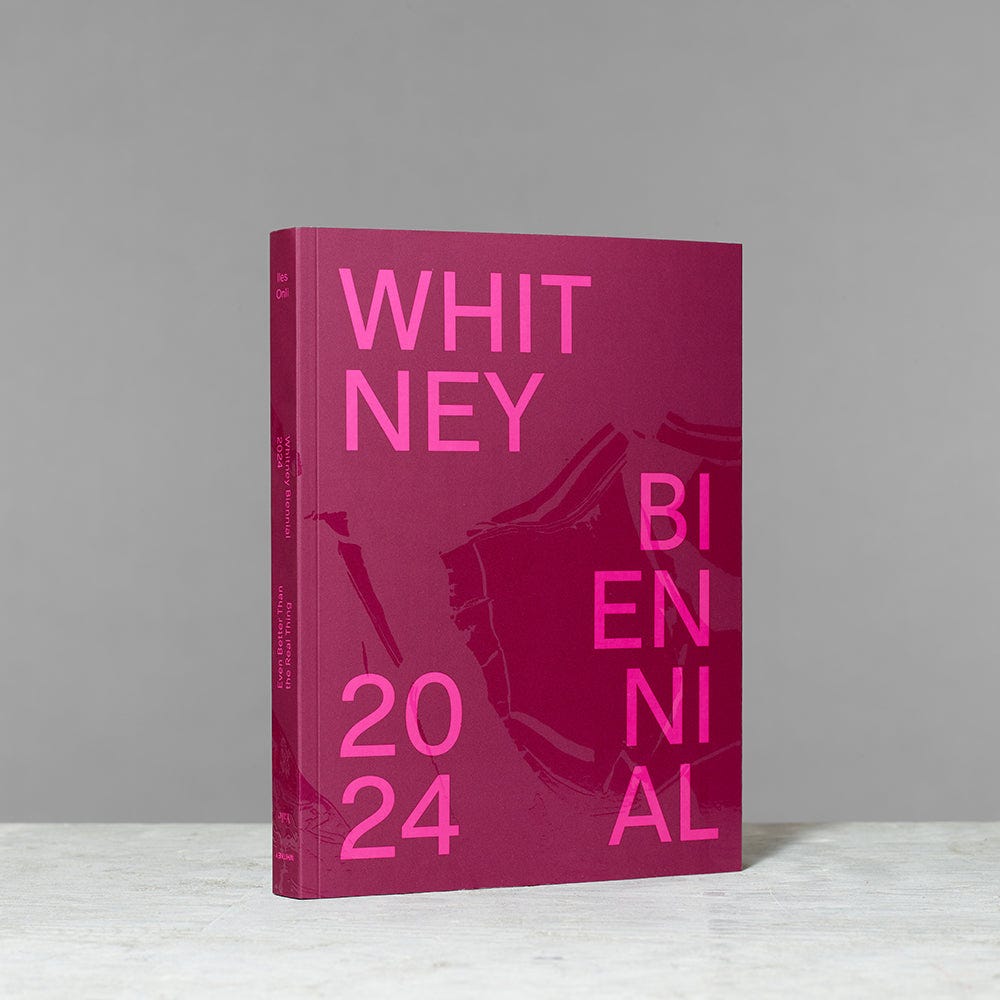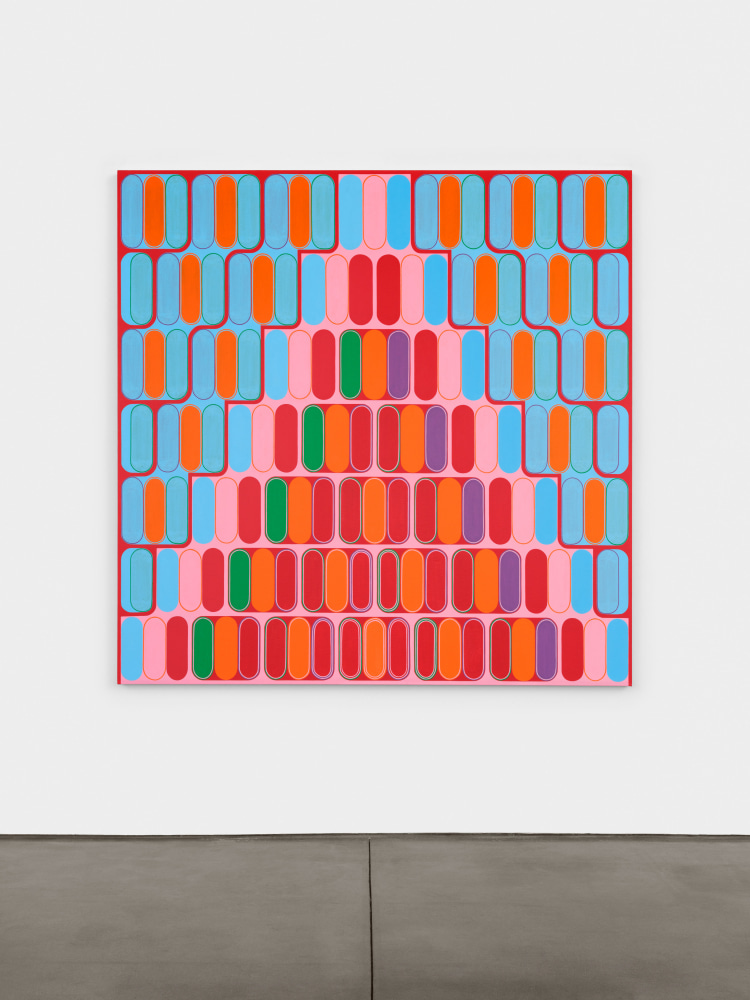OH HELLO, internet friends! I have been super busy meeting some art deadlines and getting a cold, but I am finally back to break down the Whitney Biennial for you. But before that, I have some personal business.
SUBVERSIVE MATHEMATICS: The Outlawing of Venn Diagrams in 1970’s Argentina
Since last we spoke, I have had two in-person sessions of a new performance lecture, Subversive Mathematics, and will be giving a Zoom-only performance this Sunday, June 23 at 3:00 pm (Pacific).
From my press release:
Subversive Mathematics is about the Argentinian Dirty War of the 1970s, the subsequent outlawing of Venn diagrams, and the disappearing of people and ideas. Can ideas be unthought through the sheer force of a government’s will? Is logic subversive? Can harmony be restored by removing all traces of an offending person or material? How far should you go to preserve power If you believe the future of your country is at stake?
If you are interested in attending online, here is the Zoom registration link.
EVENT SCORES FOR THE END OF THE WORLD
In my last issue, I had an open call for Event Scores for the End of the World. The book is complete and available for purchase! Here is the book trailer! It’s a great book, and I am super proud of how nicely everything came together.
If you are interested in a copy, they are $8 each, which includes shipping. Just reply to this email with your address, and I will send you my Venmo info, you will pay me, and then I will ship the book to you. (Probably after my cold goes away.)
And now, for the main event.
WHAT IS THE WHITNEY BIENNIAL?
The Whitney Biennial is a survey of American art that has taken place since 1932. The mission of the Whitney is “to be the defining museum of twentieth and twenty-first-century American art.”[1] Their Biennial is considered one of the world's most important contemporary art exhibitions, and is both loved and hated in equal measure; it’s quite fun to read all the conflicting reviews. Alex Greenberger has a great primer on the biennial over on ARTnews, and since I am loathe to repeat his work, here’s a link.
MY EXPERIENCE
My husband was going to NYC for work and asked me if I wanted to tag along, and I said yes. I’m a little weirded out by flying since COVID, but since I’m a little weirded out by everything since COVID, I didn’t let that stop me. (I have an autoimmune disease and wear a mask in public unless I am performing.) I was excited when I realized the biennial would be happening while I was there, and I spent the week looking at all kinds of art. Other exhibitions of note were:
Joan Jonas: Good Night Good Morning at the Museum of Modern Art. I had only a passing acquaintance with Jonas’ multidisciplinary career, and boy was that a mistake on my part. Not everything hit with me, but it’s always fun to see an inquisitive mind at work. I’m not interested in artists who make the same thing over and over again in different color variations; I want to watch people think with their hands.
Storywork: The Prints of Marie Watt at The Print Center. Watt lives in Portland, so it’s not very hard for me to see her work when I want to, but I’ve never seen such a large group of her prints before. She is an accomplished printmaker in her own right but has worked collaboratively with a lot of studios. (My undergrad degree is in printmaking, so I am into prints.) This was a great show.
Dan Walsh at Paula Cooper Gallery. Dan Walsh is a really smart painter, and I’ve been a fan for a while now; it was serendipity that his show opened right before I came back home. Loved it.
Okay, finally we get to the Whitney to see the biennial, and it’s okay? It’s not amazeballs, but it’s fine. If anything, it reminded me of a really good MFA thesis group show. You can see that everyone has been taking in lots of theory, and the curators have a theme, but not everything can fit into that theme, so it feels kinda disjointed even though the work is good. I have to admit though, I felt a little let down. Looking at art can cause my brain to go into overdrive, and then I have ideas for projects of my own. Not every idea is a keeper, but things can sit around in the back of my head for a while before they get good enough to be made. My original plan for this newsletter was to write about the ideas I had and the pieces that generated them. Uh. That didn’t work out for me. I thought most of the things I saw were interesting, but nothing sparked any brain flurries. For the most part, I felt like I was walking through rooms where the items didn’t have much to do with each other. Maybe that is the nature of these shows. I dunno, I’ve seen other surveys that worked as a cohesive whole. I thought maybe I was missing something, so I bought the catalog to get a deeper look into the show.
A FEW THOUGHTS ABOUT THE CATALOG
So, this catalog knows it has an impossible job. It has to make sense of a show that includes work that hits on “...concepts of embodiment, the fluidity of identity and form, sonic space that creates alternative forms of visuality, the haptics of space, critical thinking around the archipelagic, and renewed interest in psychoanalytic theory.”[2] Okay catalog, I get it. This is a survey of what’s happening in the art world right here right now. And even so, it’s just a small slice of what’s going on. What the catalog should do is give us a glimpse into the minds of the curators and artists; what is the point of this show? Why were folks chosen? After reading it twice over, I still can’t tell you. What I can say is this book is for a specific kind of viewer/reader – one with an MFA who is familiar with art theory jargon. I found it painfully dull, and I am the intended audience. It leads me to believe that not only is the book targeted at academics, but so is the show. I’ve talked a lot about the contemporary art market in this newsletter, but I’ve only just nodded at the parallel art world of academia. Being in the Whitney Biennial might give an artist a bump in the market, but it is for sure going to add to their cachet with those engaging in “the Discourse.” From my second newsletter:
“(The Discourse is) all the inside baseball talk that goes on in art schools, galleries, art fairs, museums, magazines, books, podcasts, etc. It’s the theories written to analyze what it all means, critique the power structures that affect how work is read or received, and place a work within a historical context or remove it in order to look at it anew.”

I believe with all my heart that there is a way to talk about this show in language that is accessible and dynamic. I don’t mean to suggest dumbing down the content, but being clearer would open this world to more people. Yes, I get that keeping out the riff-raff is a part of the purpose of jargon; the academic art world depends on scarcity in the same way the contemporary art market does. Only a few people can have access to the secret knowledge that justifies the MFA industrial complex. If you are in a theory class and you wanna bust out all the fancy words, please be my guest. It’s appropriate to the situation. (Still boring though.) I think a catalog for a public-facing exhibition should be something that helps people understand what they saw. This does not do that, and honestly, I liked the show even less after reading it.
TELL ME HOW YOU REALLY FEEL
The show is fine, and no one is going to suffer if they see it, but the work is situated (both in the discourse and in the museum itself) in such a way that a non-art insider might not have a great time. I believe that viewing art is a lot like learning to read. You start off knowing nothing but with some perseverance, you figure things out, and eventually, you feel comfortable with the hard stuff. But you don’t have to get that deep into it if you don’t want to; there is a lot of enjoyment in just having a mid-level knowledge. My husband doesn’t know much art theory outside of what I force him to listen to during my rants, but he has a deep interest in art and takes pleasure in engaging with it. Some of the work in the biennial is really good, and the wall text is definitely better than the catalog, but we both came away from the show unable to define any kind of thesis statement or through-line.
But I don’t wanna just focus on the annoying stuff. There were some things that stood out to me, and I thought I would briefly address two of them.
Talking Shit with Amaru (Wari), 2023 (Eamon Ore-Giron)
I have spent a lot of time thinking (daydreaming in the shower) about how to represent various indigenous Mexican deities via geometric abstract painting. (Because I am Mexican-American and an occasional not-very-good painter.) Uh, I’m not really gonna bother anymore. Ore-Giron is really good, and I can reclaim my time to practice my Academy Awards acceptance speech.
Ghost Like Us, 2020 (Riar Rizaldi )
Remember how I said nothing at the Biennial set off little sparks in my brain? Well, this did, although I did not see it until I got home, so I wasn’t lying. It’s an arty essay film about the history of Indonesian Horror films and their relationship with politics. This is well worth the 20-minute investment. I’ve been thinking a lot about essay films and how I would approach making one. This one is rad. Yes, I know I abuse this word, but it’s for real worth your time.
MORE REVIEWS
I feel like this is a very anticlimactic newsletter, but that is in keeping with my experience. There are a lot of other opinions about this biennial. If you are interested, here are some of the ones I enjoyed reading.
https://news.artnet.com/art-world-archives/whitney-biennial-2024-dissonant-chords-2466356
https://www.nytimes.com/2024/03/13/arts/design/whitney-biennial-review-museum-art.html
https://hyperallergic.com/901709/stop-calling-the-2024-whitney-biennial-safe/
https://www.newyorker.com/magazine/2024/04/01/the-whitney-biennial-art-review
https://www.artnews.com/art-news/reviews/whitney-biennial-2024-review-1234699647/
https://www.vulture.com/article/whitney-biennial-2024-review.html
https://news.artnet.com/art-world/the-whitney-biennial-cant-go-on-like-this-forever-2459278
https://www.washingtonpost.com/entertainment/art/2024/03/16/whitney-biennial-2024/
[1] https://whitney.org/about/mission-values.
[2] Whitney Biennial 2024 Catalog, p 9.








